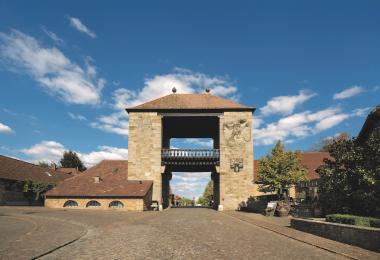Earlier this year, news broke that screw caps are now affixed to around 30% of the total global bottled still wine market.
The research, released by Euromonitor, shows an extraordinary change in the world’s wine market – and it’s happened relatively rapidly. In 2012, the market share of screw caps – aluminium closures – in Europe was around 26%, but rose to 29.6% by 2016. While winemakers from the New World initially took the lead in adopting screw caps, the market has now seen growth in markets as traditional as France.
Yet less than two decades ago, screw caps were just a niche, not taken seriously. What happened?
A complete revolution
In 1959 a French company, La Bouchage Mecanique, introduced the Stelcap-vin to the wine market, after having success using it to close spirit and liqueur bottles. By the 1980s a number of Swiss winegrowers had adopted it, using it to protect their white Chasselas wine. The story would have ended there, because aluminium closures still retained something of a cheap and cheerful image, except for one thing. In the mid-1970s, Australian Consolidated Industries began trialling this new closure method – and their results were promising. After they published their findings, Australians not only took note, but the prestigious Australian Wine Research Institute decided to look into the situation.
Beginning in the late 1980s, Australia had begun to experience a massive wine export boom, and their technically-minded winemakers were becoming frustrated and angry at how many of their wines were being ruined by cork taint. In a sign of how serious the cork taint issue was, a group of Clare Valley winemakers banded together in 2000 to make the change to screw cap – the bottles they needed couldn’t be sourced in Australia, so they needed a critical mass of people to make the order of 250,000 French bottles worthwhile.
In 2001, the Australian Wine Research Institute finally published its report on screw caps – and the results proved that not only were screw caps a superior wine seal, but they were more consistent than cork when it came to oxygen ingress, meaning that wines sealed under aluminium aged at a steady rate. Bottles of the same vintage aged under cork, on the other hand, could develop in markedly different ways. According to wine writer Jamie Goode, by 2004, 200m Australian bottles of wine were closed under screwcap – an astonishing 10% of the national output.
Back in 2001, a group of New Zealand winemakers had founded the New Zealand Screwcap Wine Seal Initiative, a project whose purpose was to encourage research and a robust exchange of ideas. More than that, the New Zealanders – undergoing a wine export boom of their own – were unapologetic about their change to screw cap, even when sending their wines to export markets whose preference was for cork. With two such exporting powerhouses taking a stand on screw caps, it was inevitable that winemakers elsewhere would give the closures serious consideration.
The Austrians also adopted aluminium closures for their white wines, and the Germans soon followed.
The aluminium advantage
Aluminium closures had been used for a long time to seal other liquids, such as water, but by 2006 it was clear that the overall closure market was expanding so fast that the various manufacturers needed their own body, and so the Aluminium Closures Group, headquartered in Germany, was formed.
The situation today, according to the Aluminium Closures Group, is that the aluminium closures market accounts for around 9bn units annually, out of 30bn bottles of wine sold worldwide in 2016. The major drive of global growth has been the US market, but there has been strong growth in Germany, the UK, France and the Netherlands as well.
This growth is likely to continue into the future. “We did an end consumer survey in 2014, where we asked more than 6,000 people in six countries – five European countries and the US – about closure preferences,” says Guido Aufdemkamp, executive director of the Aluminium Closures Group. “What we found is that elderly men prefer traditional closures, while Millennials prefer aluminium closures.” The implications, he says, are that as younger drinkers enter the market, they push producers to adopt screw caps, and that this is happening even in the more traditional wine producing countries such as France and Germany. Another phenomenon that has driven screw caps forward has been the remarkable rise of rosés, as rosé producers are willing to experiment with different bottle shapes and closures; many top rosés are bottled under screw cap. “I would consider that rosé wines are more often consumed by Millennials,” says Aufdemkamp. “Millenials are less traditional, because they are not so concerned with the ritual of opening the wine bottle.”
As well as the ease of opening, aluminium closures also have sustainability on their side. According to Aufdemkamp, more than 75% of all the aluminium that’s ever been produced is still in use, because recycling is a natural part of the aluminium value chain. “Aluminium closures have a big advantage, because they are collected via two streams,” says Aufdemkamp. The first is via the normal mixed packaging stream. The second one is through glass recycling, where people drop their bottles complete with the aluminium closure, which is why every second aluminium closure in Europe is recycled. “As this can still be optimised we support national recycling initiatives,” he goes on. In the unfortunate case that screw caps end up in the general waste, they can also be recovered from the bottom ashes after incineration.
The major factor in its adoption, however, is that aluminium has many properties that make it ideal as a wine bottle closure.
The perfect metal
Aluminium is one of the world’s most useful metals, thanks to its high weight to strength ratio; a light metal, it can be rolled into a thin foil that resists tearing, while being strong enough to keep an airplane aloft. It doesn’t corrode, it’s easy to work with, and it keeps its shape even when exposed to high heat. This makes it the perfect material to seal a bottle of wine: it won’t introduce unwanted flavours, it will remain sealed and it won’t rust or age. Nor will there be variability in the way the wine ages; the type of liner used controls the oxygen transfer rate, which will be the same across an entire bottling.
“It’s reasonable, it’s efficient,” says Patrice Rigaud, plant general manager at AMCOR, the makers of Stelvin, a well-known aluminium closure. “It’s also got a quality perception for the final consumer.”
The process of turning it into capsules is a simple one. The first step is to take big flat sheets of the metal and add varnish, colours and logos. The varnish, says Rigaud, is specially formulated to be food grade. The second step is to put the flat sheet through a punching press, where it’s transformed into caps. Then, the skirts of the new capsules are printed with whatever branding is desired.
The final step is to add the liner, made from different grades of food-grade plastic, as required. “What the liner is depends on what the producer expects and the kind of wines in their range,” says Rigaud.
“We have a great range, from the lowest level of permeability to the highest.” A white wine, for example, may need little exposure to oxygen, to keep it as fresh as possible. Many of the liners include a layer of tin or PVDC as an oxygen barrier layer, but Rigaud says AMCOR has recently developed new tin-free and PVDC-free liners. “We are removing PVDC from our liners because it will be easier to recycle the liners in the caps.”
The winemaker viewpoint
“We really like screw caps for the aesthetic side,” says Ann Vermeersch, winemaker at LePlan-Vermeersch Winery, a family-owned winery in Suze-la-Rousse in the Rhône Valley. “We think they’re perfect with our packaging, and they make a little statement that we’re a modern winery that like’s innovation. We’re not afraid of change, so it goes perfectly well with our image.”
Vermeersch says they made the switch to aluminium closures because they had a potential client who was interested in buying their wines – an airline. But the airline would only buy the wines if they were bottled under screw caps. “We thought, why not? Let’s try it,” says Vermeersch. “It worked well and our clients were happy with it, so we started to change all our entry and mid-level wines to screwcap.”
She admits that some customers were shocked at first, but that people came around, particularly because the design and finish of the capsules makes the bottles even more attractive. It also helped that LePlan-Vermeersch Winery exports – mostly whites and rosés – to the more innovation-loving markets of Scandinavia, as well as many markets in Asia.
Another benefit of turning to screw caps is the cost.
“Our entry level wines, our house wines, are easydrinking and the screw caps are simple and cost less than cork,” she says. “Then we have a higher priced range with a very nice finish – the screw cap has a logo on it – and these are approximately the same price as cork.”
As for any issues with the capsules, Vermeersch says it depends on the bottling. “When the bottling is not perfectly done, there can be problems with leaking,” she says. “But now we have someone who is technically very good, so we don’t have any problems any more.”
It’s a long way from the days when aluminium closures were a niche product.
As another maker of screw caps, Guala Closures, put it: “We are looking ahead into a bright future with the trend going towards more bottles of wine being sealed with screw caps. “








